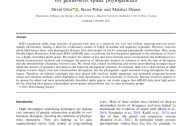Content
RAD sequencing yields large amounts of genome-wide data at a relatively low cost and without requiring previous taxon-specific information, making it ideal for evolutionary studies of highly diversified and neglected organisms. However, concerns about information decay with phylogenetic distance have discouraged its use for assessing supraspecific relationships. Here, using Double Digest Restriction Associated DNA (ddRAD) data, we perform the first deep-level approach to the phylogeny of Zodarion, a highly diversified spider genus. We explore the impact of loci and taxon filtering across concatenated and multispecies coalescent reconstruction methods and investigate the patterns of information dropout in reference to both the time of divergence and the mitochondrial divergence between taxa. We found that relaxed loci-filtering and nested taxon-filtering strategies maximized the amount of molecular information and improved phylogenetic inference. As expected, there was a clear pattern of allele dropout towards deeper time and mitochondrial divergences, but the phylogenetic signal remained strong throughout the phylogeny. Therefore, we inferred topologies that were almost fully resolved, highly supported, and noticeably congruent between setups and inference methods, which highlights overall inconsistency in the taxonomy of Zodarion. Because Zodarion appears to be among the oldest and most mitochondrially diversified spider genera, our results suggest that ddRAD data show high potential for inferring intra-generic relationships across spiders and probably also in other taxonomic groups.



